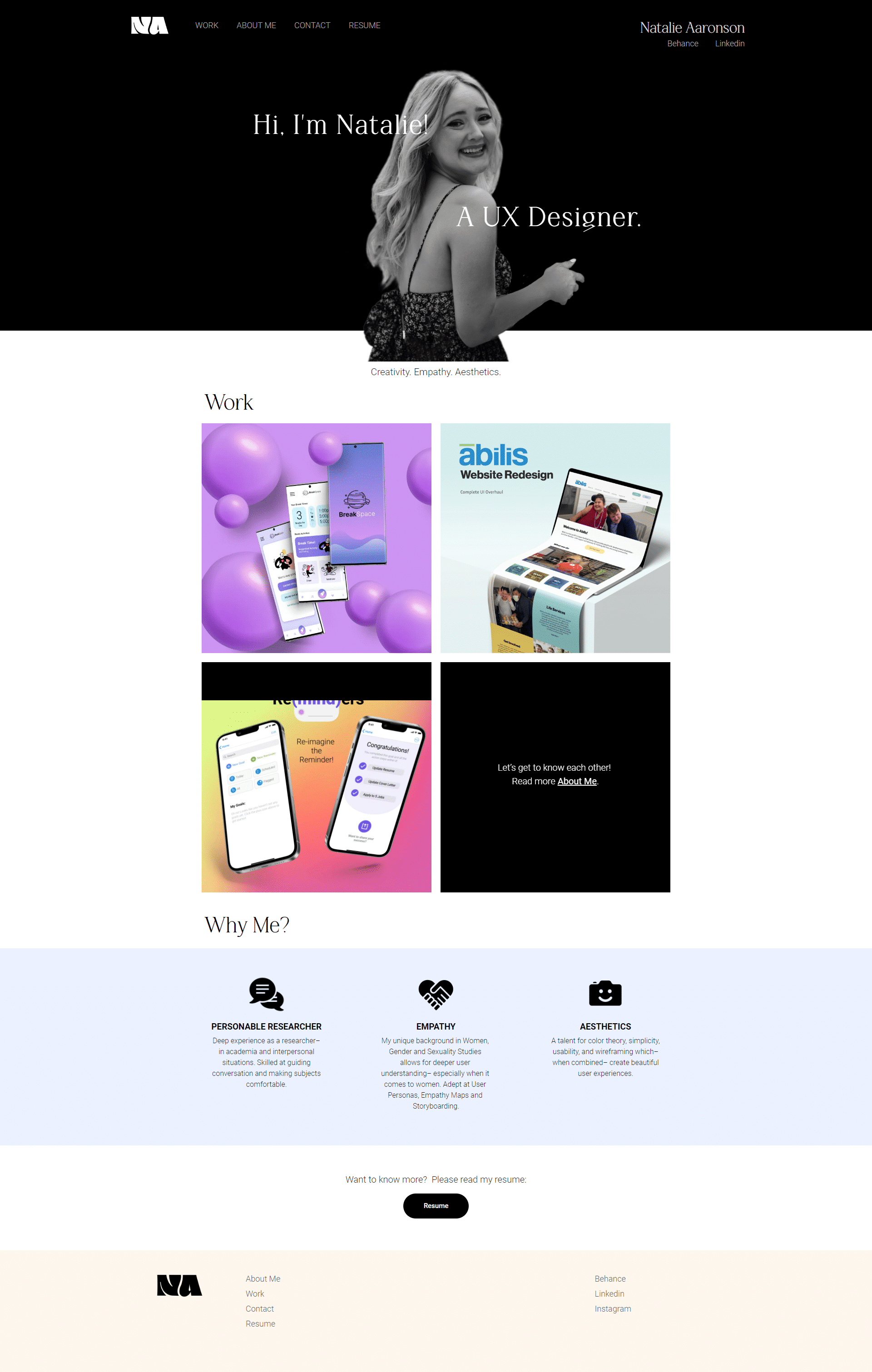The Importance of Web Design for Small Businesses
In today’s digital age, having a strong online presence is crucial for small businesses. A well-designed website plays a vital role in establishing and maintaining that presence. It not only serves as a platform to showcase your products or services but also contributes to enhancing user experience, building trust, and credibility.
Enhancing User Experience
User experience (UX) is a critical factor in web design. It refers to the overall experience that a visitor has while interacting with your website. A good user experience can lead to a higher conversion rate and increase sales (SMA Marketing). On the other hand, a poor user experience can drive potential customers away. In fact, 88% of online consumers are less likely to return to a website after a bad user experience.
To enhance user experience, your website should prioritize factors such as easy navigation, intuitive layout, and quick loading times. Clear and descriptive labels, well-organized content, and a user-friendly interface contribute to a positive user experience. By ensuring that visitors can easily find the information they’re seeking, you can keep them engaged and encourage them to explore further.
Building Trust and Credibility
A well-designed website can help build trust and credibility with users. When potential customers land on your website, they form an immediate impression based on its appearance and functionality. A professional and visually appealing design instills confidence in your brand and creates a positive perception of your business (SMA Marketing).
In addition to aesthetics, a well-designed website should also provide valuable and relevant content. High-quality images, informative product descriptions, and customer testimonials can all contribute to building trust and credibility with your audience. By showcasing your expertise and demonstrating that you understand their needs, you create a sense of reliability and authenticity.
By focusing on enhancing user experience and building trust and credibility, small businesses can leverage the power of web design to establish a strong online presence. Whether you’re just starting or looking to revamp your existing website, investing in professional web design can bring significant benefits to your business. It allows you to effectively communicate your brand, engage with your target audience, and ultimately drive conversions and growth.
The Impact of Web Design on Search Engine Optimization (SEO)
A well-designed website can have a significant impact on search engine optimization (SEO), which is crucial for improving your online visibility and attracting organic traffic. By focusing on certain aspects of web design, you can enhance your SEO efforts and boost your website’s performance in search engine rankings.
Improving Organic Traffic
One of the key benefits of effective web design is the ability to improve organic traffic to your website. When your website is user-friendly, easy to navigate, and visually appealing, it encourages visitors to stay longer and explore more pages. This increase in user engagement signals to search engines that your website is relevant and valuable to users, potentially leading to higher rankings in search results.
A user-friendly website design helps reduce bounce rates and increases the likelihood of visitors interacting with your content, products, or services. By incorporating clear calls-to-action and intuitive navigation, you can guide users to the information they are seeking and encourage them to take desired actions, such as making a purchase or filling out a contact form.
Optimizing for SEO Rankings
Web design plays a crucial role in optimizing your website for search engine rankings. Search engines look for various factors when determining the relevance and quality of a website. By incorporating SEO best practices into your web design, you can improve your chances of ranking higher in search results.
To optimize your website for SEO rankings, consider the following:
-
Relevant and High-Quality Content: Incorporate relevant and high-quality content on your web pages. This includes using appropriate keywords strategically throughout your content and optimizing meta tags, such as title tags and meta descriptions, to accurately describe the page’s content (Search Engine Land).
-
Fast Loading Speed: Ensure that your website loads quickly across different devices and internet connections. Slow-loading websites can negatively impact user experience and SEO rankings. Optimize images, minimize scripts, and leverage caching techniques to improve your website’s loading speed.
-
Mobile-Friendliness: With the increasing use of mobile devices, having a mobile-friendly website is crucial for SEO. Responsive design, which adapts your website’s layout and content to different screen sizes, ensures a positive user experience across devices. This is particularly important as search engines prioritize mobile-friendly websites in their rankings.
-
Proper URL Structure: Create clean and descriptive URLs that include relevant keywords. A clear and concise URL structure helps search engines understand the content of your web pages and can improve your chances of ranking for targeted keywords.
By incorporating these SEO-focused elements into your web design, you can enhance your website’s visibility, attract organic traffic, and improve your overall SEO rankings.
In addition to web design, implementing effective marketing strategies such as social media marketing, content marketing, and link building can complement your web design efforts and further improve your SEO performance. These strategies work hand in hand to drive more traffic to your website and increase your online presence (Search Engine Land).
Best Practices for Effective Web Design
To create a successful online presence for your small business, it’s essential to implement best practices in web design. By prioritizing usability, visual design, and navigation, you can create a user-friendly website that effectively represents your brand. Here are three key aspects to consider:
Usability and User-Friendliness
Usability is the foundation of effective web design. A well-designed website should prioritize usability, simplicity, and clarity in order to create a positive user experience and encourage user engagement (Smashing Magazine). Consider the following factors:
-
Simplicity: Keep the design clean and uncluttered, avoiding excessive visuals or complicated layouts. A minimalistic approach allows visitors to focus on your content and easily navigate the site.
-
Consistency: Maintain consistency in your visual elements, such as font, color scheme, and layout, across all pages. Consistency creates a cohesive user experience and helps visitors navigate the site more easily (LinkedIn).
-
Clear Visual Hierarchy: Design your website with a clear visual hierarchy, using headings, subheadings, and visual cues like color and contrast. This guides visitors through the content and makes it easier to understand important information (LinkedIn).
Visual Design and Branding
Visual design and branding play a crucial role in establishing your small business’s online presence. Consider the following elements:
-
Branding: Incorporate your brand’s logo, colors, and overall aesthetic into the website design. Consistent branding across your website helps reinforce brand recognition and creates a sense of trust and familiarity.
-
Visual Appeal: Design your website to be visually appealing, using high-quality images, appropriate typography, and visually pleasing color schemes. A visually appealing website can captivate visitors and make a positive impression.
-
Layout and Readability: Ensure that your website has a well-organized layout that is easy to scan and read. Use appropriate font sizes, line spacing, and paragraph breaks to enhance readability and ensure that visitors can easily consume your content.
Website Navigation and Hierarchy
Navigation is critical to the success of a website. An intuitive and well-designed navigation system allows visitors to easily find the information they are looking for. Consider the following:
-
Clear and Descriptive Labels: Use clear and descriptive labels for your navigation menu items. Avoid vague or confusing labels that may confuse visitors. Clear labels help visitors understand what to expect when they click on a particular menu item.
-
Breadcrumbs and Sitemaps: Consider implementing breadcrumbs or sitemaps to help visitors find their way around the site. Breadcrumbs provide a clear path of navigation, allowing users to easily backtrack if needed. Sitemaps offer a comprehensive overview of the website’s structure, making it easier for visitors to locate specific pages or sections.
By incorporating these best practices into your web design strategy, you can create an effective and user-friendly online presence for your small business. Remember, a well-designed website enhances user experience, builds trust and credibility, and ultimately drives success in the digital landscape.
Mobile Optimization and Responsive Design
In today’s digital landscape, it is essential to prioritize mobile optimization and responsive design in web design and marketing strategies. With the majority of internet users accessing websites through mobile devices, having a mobile-friendly design is crucial for small businesses to establish a strong online presence.
Importance of Mobile-Friendly Design
According to SEMrush, mobile devices account for a significant portion of web traffic. Therefore, it is vital to ensure that your website is optimized for mobile devices. A mobile-friendly design enables your website to adapt and provide a seamless user experience across different screen sizes and resolutions. This ensures that visitors can easily navigate and interact with your website on their smartphones or tablets.
Not only does mobile optimization enhance user experience, but it also plays a crucial role in search engine optimization (SEO). Search engines prioritize mobile-friendly websites in their rankings, as they aim to deliver the best possible results to their users. By having a mobile-friendly website, you increase your chances of ranking higher in search engine results pages (SEMrush). This can lead to increased visibility, organic traffic, and potential customers.
Responsive Design for Different Devices
Responsive design is a key component of mobile optimization. It involves designing and developing your website in a way that allows it to automatically adjust and adapt to various screen sizes and orientations. With responsive design, your website layout, images, and content will dynamically resize and reposition based on the device being used.
By implementing responsive design, you can ensure that your website provides a consistent and optimal user experience across different devices, whether it’s a smartphone, tablet, or desktop computer. Users will not need to manually zoom in or scroll horizontally to view content, making it easier and more enjoyable for them to navigate your site.
To fully leverage the advantages of responsive design, it is important to work with a professional web designer or utilize online web design services like Blue Coast Web Services that specialize in creating mobile-friendly websites. These experts can ensure that your website is optimized for mobile devices, with features such as easy-to-tap buttons, legible text, and efficient loading times.
Remember, your website’s loading speed is also a critical factor in search engine rankings. Therefore, optimizing your website for fast loading on mobile devices is essential to enhance both user experience and SEO performance (SEMrush). By prioritizing mobile optimization and responsive design, you can effectively engage with your audience, improve your online presence, and drive business success.
Content and SEO in Web Design
When it comes to web design, content plays a crucial role in attracting and engaging visitors while also optimizing the website for search engine visibility. Here are two key aspects to consider when it comes to content and SEO in web design.
High-Quality and Relevant Content
High-quality and relevant content is the foundation of a successful website. It not only helps to attract and retain visitors but also plays a significant role in improving search engine rankings. When creating content for your website, it’s important to focus on the following:
-
Relevance: Ensure that the content you create is relevant to your target audience and aligns with their interests, needs, and pain points. Conduct thorough research to understand your audience and craft content that addresses their specific needs.
-
Information and Engagement: Provide valuable and informative content that educates and engages your audience. This could include blog articles, guides, case studies, or videos that offer insights and solutions related to your industry or niche.
-
Consistency and Updates: Regularly update your website with fresh and relevant content. This helps to keep your audience engaged and encourages search engines to crawl your website more frequently, leading to improved visibility.
-
Optimization: Incorporate relevant keywords naturally into your content to improve its visibility in search engine results. However, avoid keyword stuffing and prioritize the readability and flow of your content.
To learn more about SEO best practices, visit our article on online web design.
Optimizing with Keywords and Meta Tags
In addition to creating high-quality content, optimizing your website with keywords and meta tags is essential for improving search engine rankings and attracting organic traffic. Here’s what you need to know:
-
Keywords: Conduct keyword research to identify the phrases and terms that your target audience is using to search for products or services related to your business. Incorporate these keywords naturally into your website content, including headings, subheadings, and body text. However, avoid overusing keywords as it can negatively impact the user experience.
-
Meta Tags: Meta tags, such as title tags and meta descriptions, provide information about your web page to search engines and users. These tags should accurately describe the content of your page and include relevant keywords. The title tag appears as the clickable headline in search engine results, while the meta description provides a brief summary of the page. Optimizing these tags can improve click-through rates and attract more visitors to your website.
To optimize your website effectively, consider using SEO tools and consulting with professionals who specialize in online presence for small businesses. By creating high-quality and relevant content and optimizing it with keywords and meta tags, you can enhance the visibility of your website, attract organic traffic, and improve your overall web presence.
Marketing Strategies for Web Presence
To establish a strong web presence, small businesses need effective marketing strategies that complement their web design efforts. Here are three key strategies to consider: social media marketing, video marketing, and leveraging social proof.
Social Media Marketing
Social media has become an essential platform for businesses to connect with their target audience and build brand awareness. According to Ripe Media, 25% of consumers follow brands they might purchase from on social media. By incorporating social media marketing into your web presence, you can engage with potential customers, drive traffic to your website, and increase conversions.
To effectively utilize social media for marketing, consider the following tips:
- Choose the social media platforms that align with your target audience and business goals. Popular options include Facebook, Instagram, Twitter, and LinkedIn.
- Create compelling and shareable content that resonates with your audience. Videos, in particular, are highly engaging for social media marketing and are preferred for content sharing and contests.
- Integrate social media sharing buttons on your website to encourage visitors to share your content with their network.
- Incorporate social-based commenting systems, such as Facebook Comments, to foster engagement and boost authenticity and reliability.
Video Marketing
Videos have become a powerful marketing tool, capturing the attention of online users and conveying information in an engaging manner. Incorporating video marketing into your web presence can help you connect with your audience on a deeper level and effectively showcase your products or services.
Consider the following tips for successful video marketing:
- Create high-quality videos that align with your brand and convey your key messages effectively.
- Use videos to demonstrate your products, share customer testimonials, or provide valuable educational content.
- Optimize your videos for search engine optimization by including relevant keywords in titles, descriptions, and tags.
- Share your videos on social media platforms and embed them in relevant pages on your website to increase visibility and engagement.
Leveraging Social Proof
Social proof plays a significant role in influencing consumer behavior. When potential customers see positive reviews and recommendations from others, they are more likely to trust and engage with your brand. By leveraging social proof in your web presence, you can build credibility and establish trust with your target audience.
Consider the following strategies to leverage social proof:
- Encourage customers to leave reviews and testimonials on your website or social media platforms.
- Display social proof elements, such as customer ratings, reviews, and endorsements, prominently on your website.
- Incorporate social media widgets that showcase the number of followers, likes, shares, and comments your brand has received.
- Highlight any awards, certifications, or partnerships that contribute to your brand’s credibility.
By implementing these marketing strategies alongside your web design efforts, you can enhance your online presence, attract more visitors to your website, and ultimately drive business growth. Remember to regularly analyze and adapt your marketing strategies based on the evolving needs and preferences of your target audience.
Principles of Effective Website Design
When it comes to creating an effective online presence for your small business, implementing the right principles of web design is crucial. A well-designed website can captivate visitors, enhance user experience, and ultimately drive conversions. In this section, we will explore three key principles of effective website design: simplicity and clean design, consistency in visual elements, and clear visual hierarchy.
Simplicity and Clean Design
A simple and clean design is essential for creating a positive user experience. By utilizing white space and avoiding cluttered layouts, you can help visitors focus on the content of your website. A clean design allows for easy navigation and ensures that important information stands out (LinkedIn).
When designing your website, avoid overwhelming visitors with too many colors, complex navigation menus, or excessive use of graphics. Instead, opt for a minimalist approach that highlights key elements and provides a visually pleasing experience. Remember, simplicity can enhance the usability of your website and make it more accessible to a wider audience.
Consistency in Visual Elements
Consistency in visual elements is another crucial principle of effective website design. By maintaining a consistent design across all pages of your website, you create a cohesive user experience. This means using the same font, color scheme, and layout throughout your site.
Consistency helps visitors navigate your website more easily, as they become familiar with the visual cues and elements. It also reinforces your brand identity and enhances credibility. When your website presents a unified and consistent look, visitors are more likely to trust your business and feel confident in engaging with your products or services (LinkedIn).
Clear Visual Hierarchy
Designing a website with a clear visual hierarchy is essential for guiding visitors through your content. By using headings, subheadings, and visual cues such as color and contrast, you can create a clear structure that helps visitors understand the importance and relationships between different elements on the page.
A clear visual hierarchy ensures that visitors can easily scan and locate the information they need. It also improves readability and engagement. By prioritizing key information and making it visually prominent, you can draw attention to important messages or calls to action. This enhances the overall user experience and keeps visitors engaged with your website.
Implementing these principles of effective website design can significantly impact your online presence. By creating a website with a simple and clean design, maintaining consistency in visual elements, and establishing a clear visual hierarchy, you can provide an engaging and user-friendly experience for your visitors. Remember, an effective website design is a powerful tool for attracting and retaining customers, and ultimately growing your small business.
Navigation and User-Friendly Interface
When it comes to web design, navigation and user-friendly interface play a crucial role in ensuring a positive user experience. A well-designed website should have clear and descriptive labels for navigation menu items, as well as the use of breadcrumbs and sitemaps to enhance user-friendly navigation.
Clear and Descriptive Labels
Navigation is critical to the success of a website. Users should be able to easily find the information they are looking for without any confusion. To achieve this, it is important to use clear and descriptive labels for navigation menu items. Each label should accurately represent the content or section it leads to, allowing users to quickly understand what they can expect to find.
By providing clear labels, visitors can navigate through your website effortlessly, reducing the chances of frustration and increasing their engagement. It is also essential to arrange the menu items in a logical order, ensuring that users can follow a logical flow as they explore your website.
Breadcrumbs and Sitemaps
In addition to clear navigation labels, the use of breadcrumbs and sitemaps can further improve the user experience. Breadcrumbs provide users with a trail of links that show the path they have taken to reach their current location on the website. This helps them understand where they are within the site’s structure and allows them to easily navigate back to previous pages if needed.
Similarly, sitemaps provide an overview of the entire website structure and all its content. They serve as a visual guide for users and enable them to quickly locate specific pages or sections. Sitemaps can be especially useful for larger websites with a complex hierarchy.
By incorporating breadcrumbs and sitemaps into your website design, you can enhance the user-friendly interface and make it easier for visitors to navigate through your site. This can lead to increased engagement, longer browsing sessions, and a higher likelihood of achieving the desired goals.
Remember, a well-designed website should prioritize user experience, and navigation is a crucial aspect of that. Clear and descriptive labels, along with the use of breadcrumbs and sitemaps, contribute to a user-friendly interface and help visitors easily find the information they need. To learn more about leveraging web design for an effective online presence, check out our article on online presence for small business.
The Role of Mobile Design
In today’s digital landscape, mobile optimization plays a crucial role in web design and marketing strategies. As mobile devices continue to dominate web traffic, it is essential for businesses to prioritize mobile-friendly design to provide a seamless user experience across different devices.
Responsive Design for Different Devices
One of the key aspects of mobile design is implementing a responsive design approach. A responsive website design adjusts and adapts to different screen sizes and orientations, ensuring that the content and layout remain optimal regardless of the device being used. By utilizing responsive design, businesses can deliver a consistent and user-friendly experience to their website visitors, regardless of whether they are using a smartphone, tablet, or desktop computer (SEMrush).
Responsive design allows the website to adapt dynamically to the screen size, ensuring that the content is displayed correctly and is easily readable. This approach eliminates the need for separate mobile and desktop versions of the website, making it more efficient and cost-effective for businesses to maintain their online presence.
Mobile-First Approach
In addition to responsive design, businesses should consider adopting a mobile-first approach to web design. This approach involves designing the website with mobile users as the primary focus and then scaling up the design for larger screens. By prioritizing the mobile experience, businesses can ensure that their website is optimized for the majority of users who access the internet through mobile devices (LinkedIn).
Designing with a mobile-first mindset allows businesses to streamline their website’s content and prioritize the most important elements for mobile users. This approach encourages simplicity and ensures that the website is visually appealing and easy to navigate on smaller screens. It also forces businesses to consider the constraints and limitations of mobile devices, such as slower internet connections and smaller touch screens, resulting in a more user-friendly experience overall.
By adopting a mobile-first approach and implementing responsive design, businesses can create websites that cater to the needs and preferences of mobile users. This not only enhances the user experience but also improves search engine optimization (SEO) and increases the chances of attracting and retaining visitors on their website. To learn more about the impact of web design on SEO, refer to the section on The Impact of Web Design on Search Engine Optimization (SEO).
The Impact of Web Design on User Engagement
When it comes to web design, one of the key goals is to engage users and keep them on your website for longer periods of time. The design elements and features you incorporate into your website can significantly impact user engagement. In this section, we will explore three important aspects of web design that contribute to user engagement: attractiveness and layout, personalization and customization, and harnessing the power of videos.
Attractiveness and Layout
The attractiveness of your website’s design plays a crucial role in capturing users’ attention and keeping them engaged. Studies have shown that 38% of users will leave a website if they find the layout unattractive (Source). To make a positive impression, it’s important to create a visually appealing design that aligns with your brand identity. This includes choosing an appropriate color scheme, selecting high-quality images, and utilizing an intuitive layout.
A clean and well-organized layout that utilizes white space can help visitors focus on the content of your website. Avoid cluttered layouts, too many colors, and complicated navigation menus. By simplifying the design, you can create a visually pleasing experience that encourages users to explore your website further.
Personalization and Customization
Personalization and customization are powerful tools for enhancing user engagement. Research has shown that 80% of consumers are more likely to make a purchase from a brand that provides a personalized experience (Source). By tailoring your website to meet the unique needs and preferences of your target audience, you can create a more immersive and engaging experience.
Consider implementing features such as personalized recommendations, targeted content based on user preferences, and interactive elements that allow users to customize their experience. This can include features like customizable product options, personalized landing pages, and dynamic content that adapts to user behavior. By providing a personalized experience, you can make users feel valued and increase their engagement with your website.
Harnessing the Power of Videos
Videos have become an increasingly popular and effective tool for capturing user attention and boosting engagement. In fact, video content generates 1200% more shares than text and image-based content combined (Source). By incorporating videos into your web design, you can convey information, showcase products or services, and tell compelling stories in a visually engaging way.
Consider adding videos to your homepage, product pages, or blog posts to provide an interactive and immersive experience for users. This can include product demonstrations, customer testimonials, or behind-the-scenes footage. Videos can help convey complex information more effectively and evoke emotional responses, which can further enhance user engagement.
By focusing on attractiveness and layout, personalization and customization, and harnessing the power of videos, you can create a web design that captivates users and keeps them engaged. Remember, a visually appealing and personalized website that incorporates interactive elements will not only enhance the user experience but also increase the chances of achieving your business goals.
Leveraging Social Media for Web Presence
In today’s digital landscape, harnessing the power of social media is crucial for building a strong web presence. By leveraging social media platforms, small businesses can effectively reach their target audience and establish a meaningful online connection. Two platforms that play a significant role in web presence are Facebook and Instagram.
Reaching the Target Audience
Social media platforms provide an excellent opportunity to connect with your target audience. According to Ripe Media, 25% of consumers follow brands they might purchase from on social media. By creating a strong social media presence, you can engage with potential customers and build brand awareness.
Facebook, as one of the most popular social media platforms, offers various features to enhance your web presence. It allows you to create a business page and share updates, products, and services with your audience. Facebook also provides targeted advertising options, enabling you to reach specific demographics and increase your online visibility.
Instagram, known for its visually appealing content, is another powerful platform for web presence. With its focus on visuals, Instagram allows businesses to showcase their products or services through high-quality images and videos. By utilizing relevant hashtags and engaging with your audience, you can attract followers and create a community around your brand.
Importance of Facebook and Instagram
Facebook and Instagram offer unique advantages when it comes to web presence. Here are some key benefits of leveraging these platforms:
-
Engaging Visual Content: Both Facebook and Instagram allow you to share visually appealing content that captures your audience’s attention. Images and videos are more appealing to users, making them more likely to engage with and share your content (Ripe Media).
-
Social Proof: Social media marketing is highly subjected to social proof. Positive reviews and endorsements on social media platforms can increase the credibility of your brand and influence potential customers (Ripe Media). Encourage customers to leave reviews and testimonials to build trust in your products or services.
-
User Engagement and Interaction: Facebook and Instagram offer features that encourage user engagement and interaction. Social-based commenting systems, such as Facebook Comments, not only boost authenticity but also encourage conversations and conversions on your website (Ripe Media).
-
Social Login Integration: A majority of website visitors prefer to log in to a site with their existing social accounts rather than providing their email address to create an account. Integrating social login options on your website can simplify the registration process and increase user convenience (Ripe Media).
By strategically utilizing Facebook and Instagram, small businesses can expand their web presence, engage with their target audience, and drive traffic to their website. It’s important to develop a social media marketing strategy that aligns with your business goals and consistently engage with your audience to foster lasting relationships.














